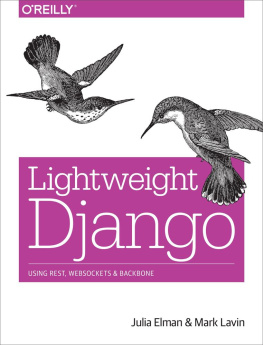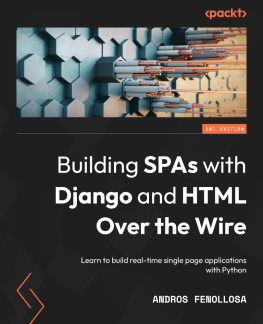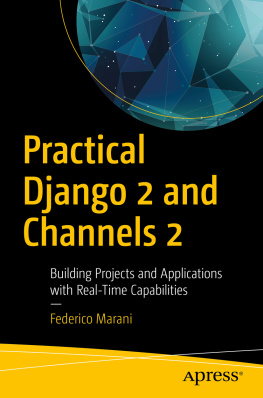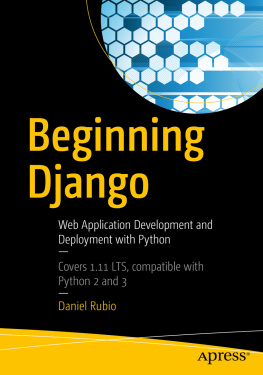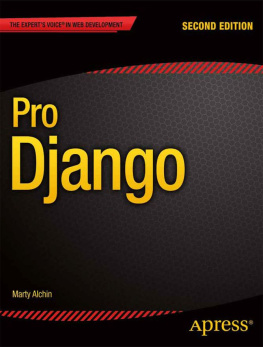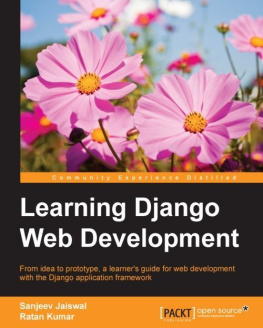Elman Julia - Lightweight Django
Here you can read online Elman Julia - Lightweight Django full text of the book (entire story) in english for free. Download pdf and epub, get meaning, cover and reviews about this ebook. City: Sebastopol (CA, year: 2015, publisher: OReilly Media, genre: Computer. Description of the work, (preface) as well as reviews are available. Best literature library LitArk.com created for fans of good reading and offers a wide selection of genres:
Romance novel
Science fiction
Adventure
Detective
Science
History
Home and family
Prose
Art
Politics
Computer
Non-fiction
Religion
Business
Children
Humor
Choose a favorite category and find really read worthwhile books. Enjoy immersion in the world of imagination, feel the emotions of the characters or learn something new for yourself, make an fascinating discovery.
- Book:Lightweight Django
- Author:
- Publisher:OReilly Media
- Genre:
- Year:2015
- City:Sebastopol (CA
- Rating:3 / 5
- Favourites:Add to favourites
- Your mark:
Lightweight Django: summary, description and annotation
We offer to read an annotation, description, summary or preface (depends on what the author of the book "Lightweight Django" wrote himself). If you haven't found the necessary information about the book — write in the comments, we will try to find it.
How can you take advantage of the Django framework to integrate complex client-side interactions and real-time features into your web applications? Through a series of rapid application development projects, this hands-on book shows experienced Django developers how to include REST APIs, WebSockets, and client-side MVC frameworks such as Backbone.js into new or existing projects.
Learn how to make the most of Djangos decoupled design by choosing the components you need to build the lightweight applications you want. Once you finish this book, youll know how to build single-page applications that respond to interactions in real time. If youre familiar with Python and JavaScript, youre good to go.
Elman Julia: author's other books
Who wrote Lightweight Django? Find out the surname, the name of the author of the book and a list of all author's works by series.

